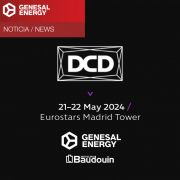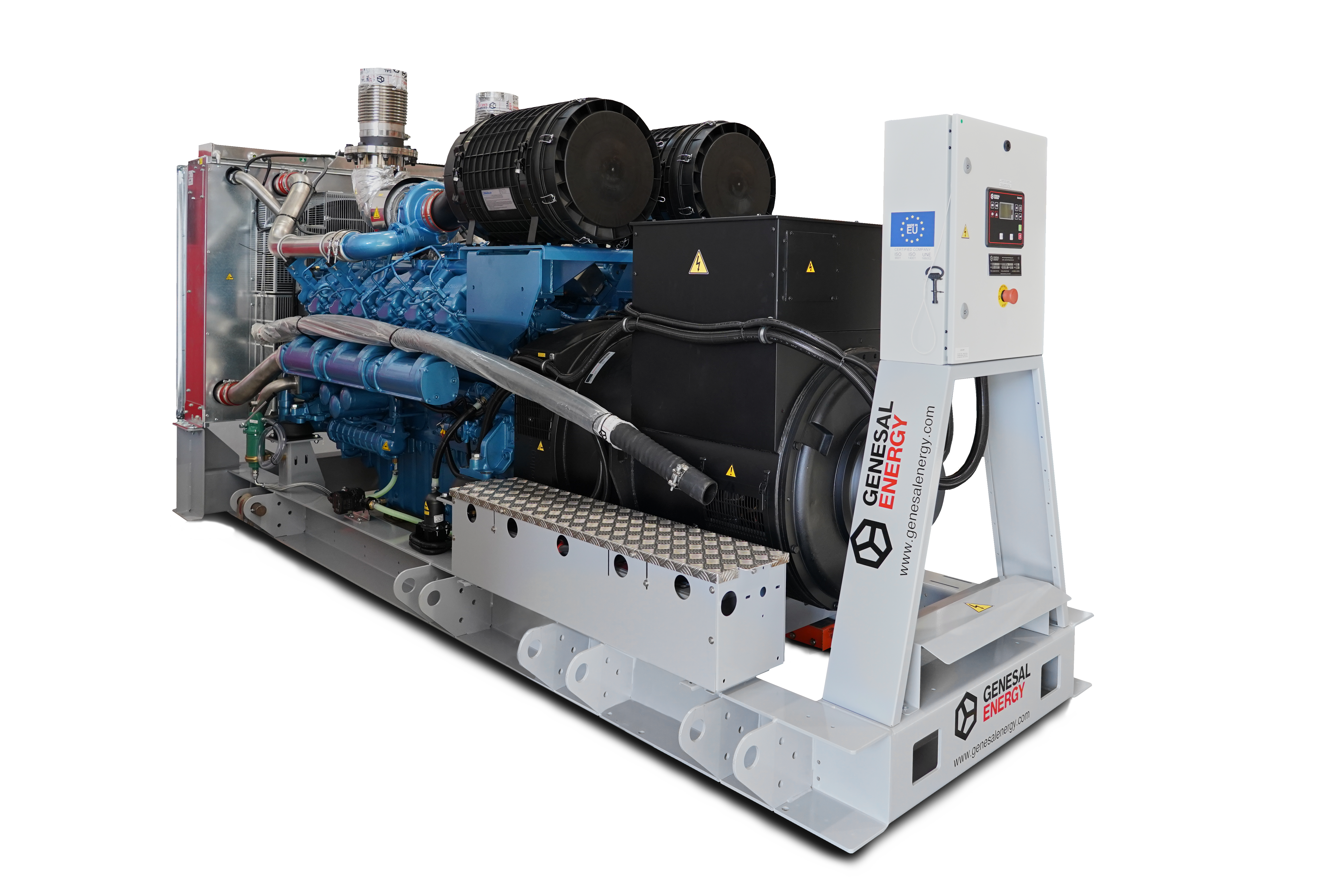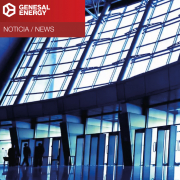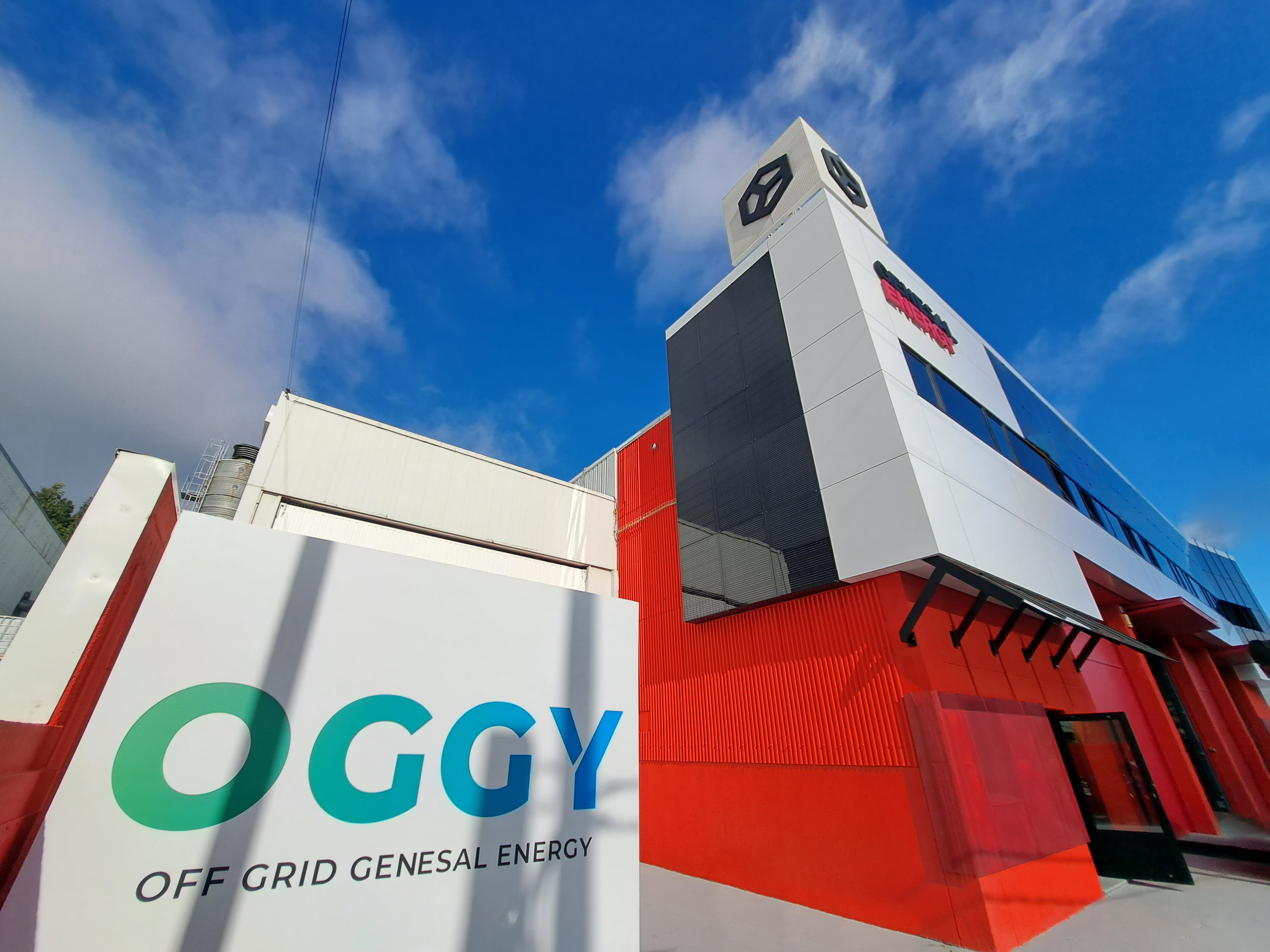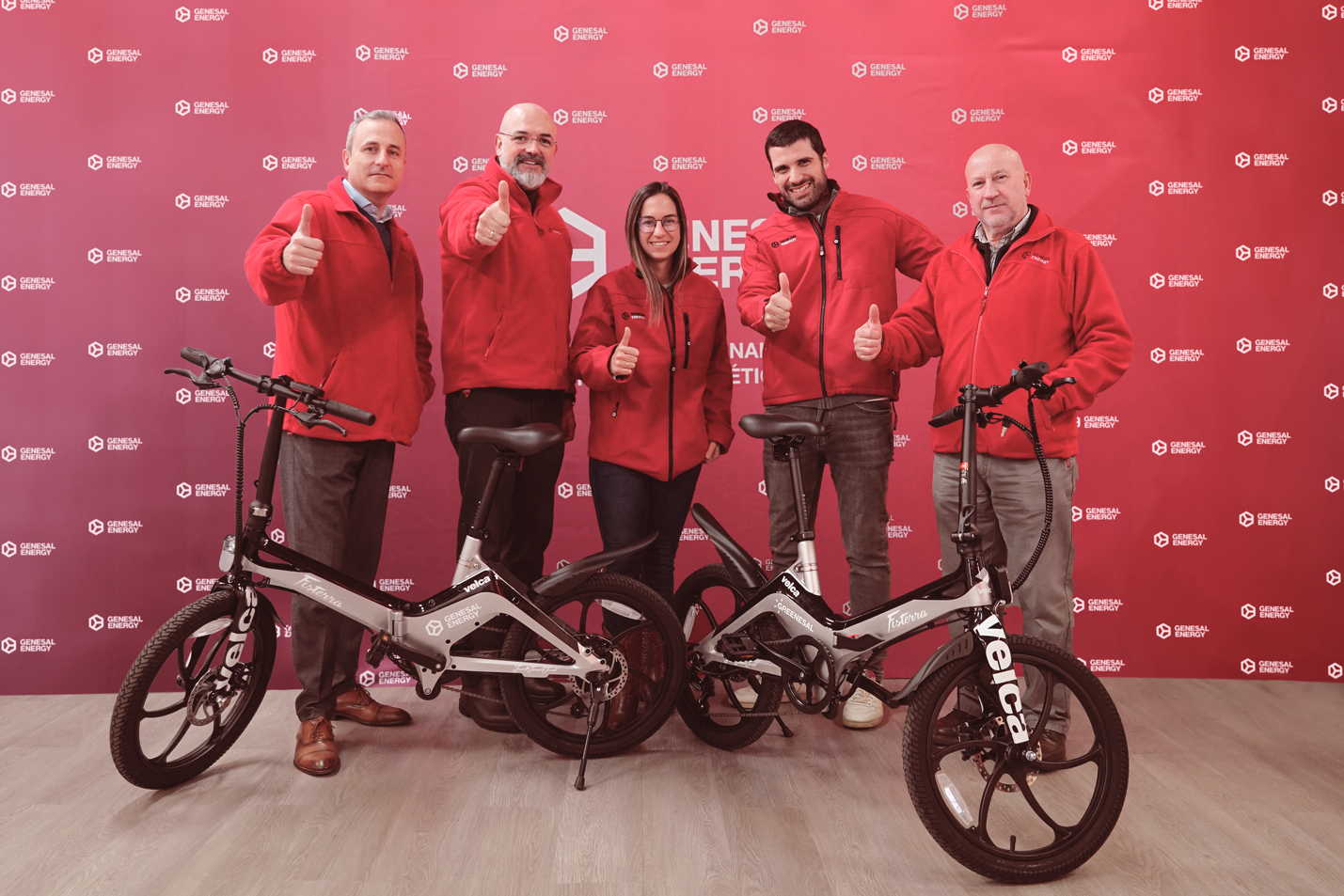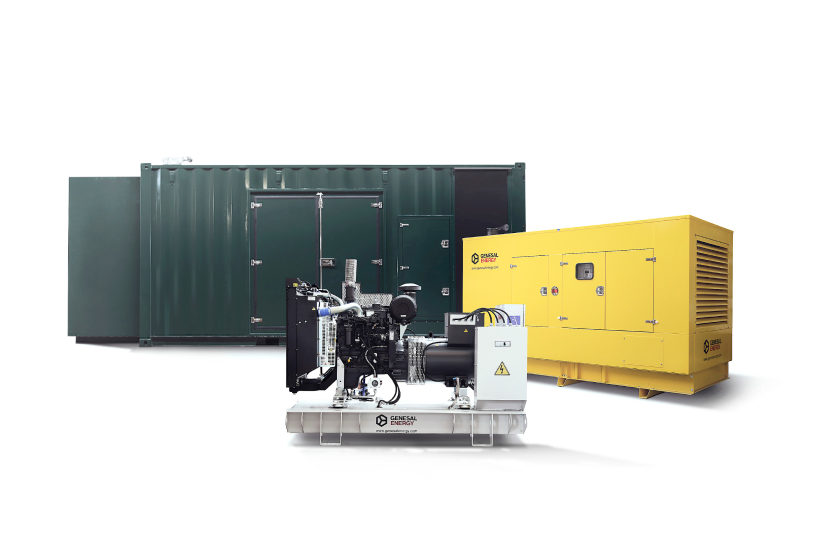
Generator sets are essential for providing a reliable source of electricity in several situations. From emergency power supply to industrial and commercial applications, this equipment is essential to ensure the continued operation of crucial sectors and services in society.
In this comprehensive guide, we will take an in-depth look at the classification and various types of generator sets available on the market, focusing on their characteristics and applications.
Generator classification:
Generating Sets by engine type
The most used on the market are those with diesel and gas engines. However, more recent technologies and trends are introducing new forms of power generation that seek to minimise environmental impact, such as hybrid gensets and Stage V gensets.
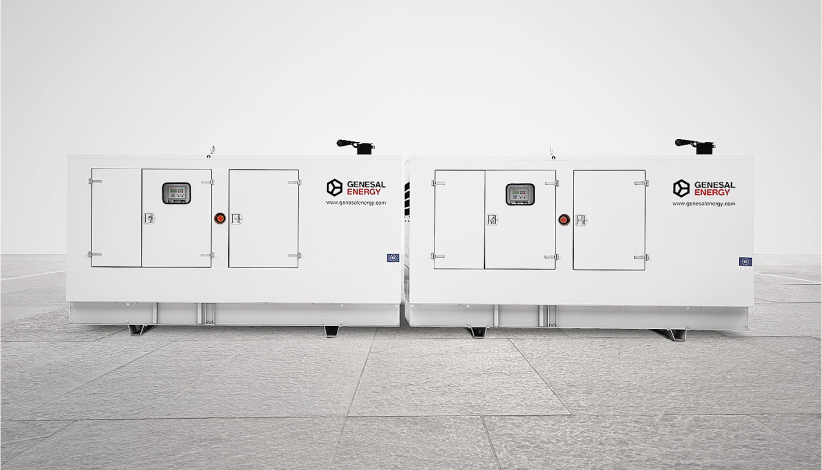
Diesel engines
Diesel gensets are widely recognised for their robustness and reliability in power generation, making them ideal for applications requiring constant power and continuous operation, from industrial environments to power supply emergencies. Available in power ranges from 5 to 3,900 kVA, these generator sets are a widespread solution in the market.
They are essential for emergency power supply in critical services such as hospitals, shopping centres, and data centres. They are also used in industrial processes to provide a reliable and powerful power source.
Gas Engines
With an increasing focus on sustainability and emissions reduction, gas-powered generator sets are gaining popularity in a number of sectors. These engines offer a cleaner, more combustion-efficient alternative, making them ideal for applications where a smaller environmental footprint is required.
They are an ideal choice for cogeneration plants, where the heat generated as a by-product of electricity generation can be utilised, thus optimising the energy efficiency of the system.
Hybrid gensets
Hybrid gensets offer the possibility of combining multiple energy sources to supply electricity. For example, in a remote telecommunications station, electricity can be generated by combining a gas genset with windmills or solar panels.
This solution is particularly suitable for isolated locations without access to the grid, such as farms, cottages, hotels or mountain huts.

Generating Sets by emission regulations
Emission regulations have changed significantly in recent years, especially in the European Union, where regulations such as Stage II, Stage III and most recently Stage V have been implemented. These regulations set increasingly stringent standards to reduce the environmental impact of diesel engines, including those used in gensets.
Generator sets with not emissions-compliant engines
Non Emission-compliant engines are those that are not subject to specific regulations for the control of pollutant emissions. Unlike engines subject to regulations such as Stage V, these engines are not designed with advanced emissions control technologies. Although they may be less stringent in terms of emissions, their environmental impact can be considerably higher, making them less favourable in the current context of air quality and sustainability concerns.
Generator sets with Stage II engines
These engines must comply with specific emission limits for particulate matter and nitrogen oxides (NOx), which involves the adoption of more advanced emissions control technologies compared to non-emitting engines. Although not as stringent as the latest standards, Stage II engines represent a significant advance in terms of emissions reduction and environmental compliance.
Generator Sets with Stage III engines
These engines are designed with advanced emission control technologies to significantly reduce particulate matter and nitrogen oxides (NOx) emissions, making them more environmentally friendly and more compatible with increasingly stringent air quality standards.
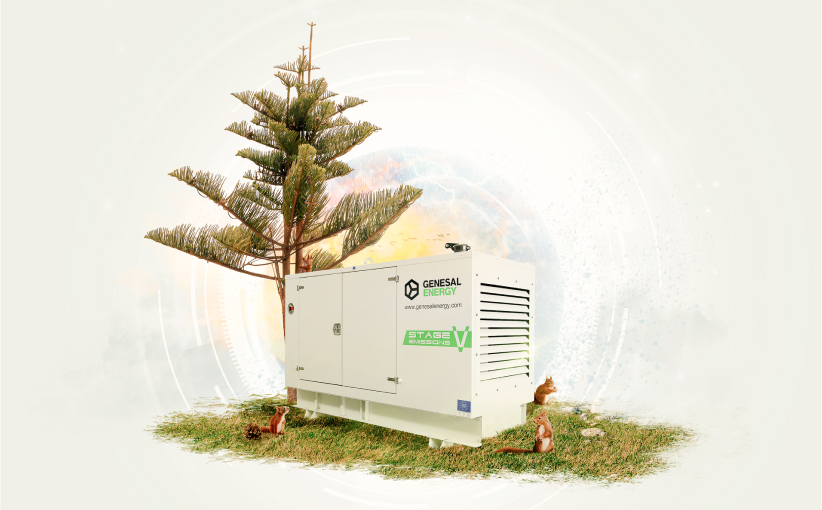
Generator Sets with Stage V engines
The European Union’s Stage V standard aims to regulate and reduce pollutant emissions not only in on-road vehicles, but also in non-road equipment such as generator sets. This regulation sets stricter limits for emissions encouraging the development and adoption of cleaner and more efficient technologies.
Stage V compliant gensets ensure a lower environmental impact and more environmentally friendly operation meeting the highest air quality standards.
Generating sets by mobility
Another way of classifying generating sets is according to their mobility, i.e. their ability to be moved to wherever they are needed. With this in mind, we can divide generating sets into two categories: stationary and mobile.
Stationary generating sets
Stationary generating sets are the preferred choice on most occasions to ensure a constant and reliable power supply in specific installations. For example, in industrial environments or in hospitals, where electricity is vital 24 hours a day, 7 days a week. Generally larger in size and capacity, these sets are designed to be permanently installed in a specific location and are specifically sized to meet the requirements of the premises.

Mobile generator sets
Mobile generator sets, on the other hand, offer flexibility and versatility in situations where mobility is essential. These – generally more compact – units are ideal for being moved from one location to another. From fairs and festivals to power failures or even natural disasters, mobile generator sets provide fast and efficient power support wherever it is needed.
When purchasing or renting a generator set, it is crucial to consider not only the capacity and power of the equipment, but also its mobility and adaptability to different scenarios.
Generating Sets by type of start-up
We can also classify the groups according to the type of start-up. This can be manual or automatic.
Manual start
When the immediacy of switching between the mains and generator supply is not crucial, a manual start genset can be installed. These systems require human intervention to start the generator in the event of a power failure. Although they may require a quicker response from personnel, manual starts are ideal in applications where direct supervision of the starting process is preferred or where this transition is not necessary, such as in stand-alone off-grid gensets.
Automatic start
Gensets with automatic start are the preferred and most common choice in situations where an immediate response to power outages is required. These systems automatically detect a power failure and activate power generation instantly to restore power without delay.
From critical applications in hospitals and data centres to the protection of sensitive facilities, automatic start-ups guarantee a smooth transition between the grid supply and the backup generator, always ensuring continuity of power service.
Generator Sets by Soundproofing Type
Depending on the intended use of the generator set and the needs of the environment in which it is installed, these machines can be manufactured in open or soundproof configurations.
Open Generator Sets
Open generator sets are a more economical and versatile option that provides easy accessibility for maintenance and operation. Although they do not offer the same level of soundproofing as canopied models, they are suitable for applications where noise is not a primary concern, such as industrial facilities.
Key advantages of open generator sets include their more compact size compared to soundproof sets, making them ideal for small spaces, and easier maintenance tasks.
Soundproofed Generator Sets
Soundproofed generator sets are the right solution for noise-sensitive environments where quiet and comfort are essential. These generators are distinguished by their careful design and their ability to minimize the level of noise generated during their operation, making them an ideal choice for places such as hospitals, residential areas or office buildings. Canopied sets make it possible to maintain an environment free of disturbing noise, promoting a healthier, more productive and habitable environment.
The key to their effectiveness lies in their structural features, which are designed with high-quality sound-absorbing materials and advanced acoustic insulation systems. Allowing for a significant reduction of the sound level, making the environment quieter and more comfortable for those in their proximity.

Generator Sets by Voltage Type
Single-phase Generator Sets
A popular choice for applications where power demand is relatively low and considerable power is not required. They are particularly suitable for domestic use, small businesses and agricultural applications where the load is light, and simplicity is key. Their compact design and ability to operate efficiently as back-up systems make them a convenient and affordable solution for maintaining continuity of power supply in emergency situations or for occasional use.
Three-phase Generator Sets
The right choice for applications requiring high power and supply stability. They are suitable for industrial, commercial and construction environments where power demand is significant and constant levels of electricity are needed to power complex machinery, equipment and systems. Their ability to handle heavy loads and distribute power evenly between phases makes them a reliable choice for a wide range of demanding applications.

In this practical guide, we have compiled the main classifications commonly used. Depending on the characteristics of the generating sets, they can also be classified according to their power, use or other aspects.




















